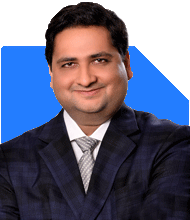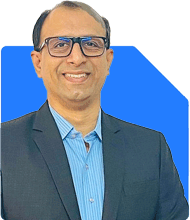Hardik Parikh | Answer |Ask -Follow
Tax, Mutual Fund Expert - Answered on Jul 23, 2023
He also holds an MBA degree from IIM-Indore.
Hardik, who began his career as an equity research analyst, founded his own advisory firm, Hardik Parikh Associates LLP, which provides a variety of financial services to clients.
He is committed to sharing his knowledge and helping others learn more about finance. He also speaks about valuation at different forums, such as study groups of the Western India Regional Council of Chartered Accountants.... more

Hello Hardik, Can i claim the deduction for the Professional update Allowance under the new tax regime? If yes, under which section ? I am a Government Servant. Thanks.
I understand your query regarding the Professional Update Allowance. As per the current tax laws in India, there isn't a specific section that allows a deduction for Professional Update Allowance for government employees under the new tax regime.
However, certain allowances are exempt under Section 10(14) of the Income Tax Act, but these are specific and subject to certain conditions. It's important to note that the new tax regime, introduced in the 2020 budget, offers lower tax rates but requires taxpayers to forego most deductions and exemptions.
I would recommend consulting with a tax advisor or your department's finance team for more specific guidance based on your individual circumstances.
I hope this helps!
Best,
Hardik
You may like to see similar questions and answers below
Mihir Tanna |1089 Answers |Ask -Follow
Tax Expert - Answered on Feb 15, 2023
Sanjeev Govila | Answer |Ask -Follow
Financial Planner - Answered on Mar 01, 2023
Mihir Tanna |1089 Answers |Ask -Follow
Tax Expert - Answered on Mar 30, 2023
Mahesh Padmanabhan | Answer |Ask -Follow
Tax Expert - Answered on May 26, 2023
Ulhas Joshi |280 Answers |Ask -Follow
Mutual Fund Expert - Answered on Dec 05, 2025
Dr Dipankar Dutta |1835 Answers |Ask -Follow
Tech Careers and Skill Development Expert - Answered on Dec 04, 2025
Ravi Mittal |676 Answers |Ask -Follow
Dating, Relationships Expert - Answered on Dec 04, 2025
Anu Krishna |1745 Answers |Ask -Follow
Relationships Expert, Mind Coach - Answered on Dec 04, 2025
Anu Krishna |1745 Answers |Ask -Follow
Relationships Expert, Mind Coach - Answered on Dec 04, 2025
Mayank Chandel |2562 Answers |Ask -Follow
IIT-JEE, NEET-UG, SAT, CLAT, CA, CS Exam Expert - Answered on Dec 04, 2025
Mayank Chandel |2562 Answers |Ask -Follow
IIT-JEE, NEET-UG, SAT, CLAT, CA, CS Exam Expert - Answered on Dec 04, 2025
Mayank Chandel |2562 Answers |Ask -Follow
IIT-JEE, NEET-UG, SAT, CLAT, CA, CS Exam Expert - Answered on Dec 04, 2025
Mayank Chandel |2562 Answers |Ask -Follow
IIT-JEE, NEET-UG, SAT, CLAT, CA, CS Exam Expert - Answered on Dec 04, 2025
Mayank Chandel |2562 Answers |Ask -Follow
IIT-JEE, NEET-UG, SAT, CLAT, CA, CS Exam Expert - Answered on Dec 04, 2025


























